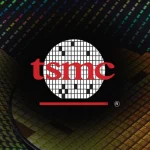NVIDIA has commenced a major crackdown on shady graphics card companies which are offering fake GeForce graphics cards.
NVIDIA cracks down on fake graphics card companies selling supposed GeForce GPUs
The time of sky-high pricing on graphics cards is still somewhat here due to inflation, but we can no longer blame the cryptocurrency markets for that. However, a series of new graphics card makers are starting to emerge out of nowhere with brands like Bingying, Corn, Jieshuo, & Mllse which are attempting to sell their wares among larger companies like ASUS, Colorful, GALAX, Gigabyte, MSI, and Zotac.
The only problem is NVIDIA never heard of the first set of companies, even if the manufacturers are selling similar models. Team Green has had enough and is working with e-sellers to eliminate the problem at the retail level.
Retail outlets such as eBay were notorious for sellers promising that they were selling a fake graphics card as the real thing for extremely cheap, and now the problem has spread to large retailers. Amazon, Newegg, and others are finding a wealth of fake GPUs selling for meager prices.
Today, with all that we are taught about purchasing online, we would throw caution immediately if it did not have a name like Gainson, Injoy, Maxsun, and Yeston, which may not be at the top of the list of household GPU names, to choose from. However, new PC builders looking to save money and are naive to what they are purchasing will end up with a “lemon.”
So, how are these cards allowed on the market? Unfortunately, used GPUs escalated in quantity after the cryptocurrency years, with several digital currency enthusiasts, bankers, and others stuck with hundreds of GPUs that people avoided purchasing.
It is well known that if you buy a used graphics card from a crypto-miner, the life span could be equated to that of someone who used the GPU for intense gaming sessions that stressed the card further than anticipated, especially with games coming out with taxing requirements. Now we have seen demonstrations before that show that graphics cards used in crypto mining can still deliver performance on par with cards that are shiny new but that doesn’t mean you should be buying one for a component to fail later.
You can find some examples of these repurposed mining cards from our Twitter friend, I_Leak_Vn:
Some photos and clips of ex-mining Strix 3090 that are badly modded https://t.co/onQ9eWQvVP pic.twitter.com/Swt0jZscUS
— I_Leak_VN (@I_Leak_VN) March 30, 2023
Desperate crypto miners looking to make their investment back, if not come close to making something in return, have taken measures to resell the cards by painting over components of the graphics cards or using laptop GPUs in place of desktop graphics cards to sell a “frankenstein-esque” GPU. This leads to names on boxes resembling NVIDIA model numbers, using phrases like “RTX 3070” and adding different model numbers to it to seem real. Some of them are even trying to repaint the memory modules and components to make them seem new however, they have been used rigorously in mining and have serious amounts of wear and tear.
But it’s not just crypto cards that are being offered as new with firmware changes, a few vendors have also recently popped up in Asian markets who are retrofitting GPUs designed for the mobile segment and offering them as desktop graphics cards.
These cards include an RTX 3060 12 GB with the specifications of the laptop variant but are priced at just 999 RMB at JD.com which equals around $150 US. A much lower price than what the proper RTX 3060 12 GB retails for ($250 US+). These cards would look very enticing at first but these are unofficial variants that never got approved by NVIDIA in the first place and the company is also unaware of the methods being used to make such models.
NVIDIA has been in talks with online retailers to remove fake NVIDIA graphics cards from listings. The e-commerce community has helped immensely to initiate and deliver for Team Green, reports Kuai Technology. JD.com and Douyin, two of the largest Chinese online electronics retailers, are reportedly removed and have gone as far as to restrict fraudulent and refurbished NVIDIA GPUs, including GPU architectures Turing and Pascal generations. Tmail and Pinduoduo have also instated sales policies that are reported to have strict guidelines regarding second-hand and refurbished graphics cards.
But what if you are one of those shoppers looking for advice on finding the right graphics card and one that a reputable company makes? NVIDIA has offered information for buyers on what to look out for when buying a graphics card in today’s marketplace.
Purchase NVIDIA GeForce RTX 40-series graphics cards.
Purchase from NVIDIA’s official partners that we mentioned at the beginning of the article.
Purchase previous generations of NVIDIA GeForce RTX 30-series (Ampere) GPUs, such as the GeForce RTX 3060 Ti GDDR6X or the GeForce RTX 3060 8GB.
While the advice blatantly focuses on just going “NVIDIA! NVIDIA! NVIDIA!” the honest answer is to do your research and ask friends or family that understand computing. Go to review sites that understand PC components (we know of a great one here), and do what you can to understand what you are purchasing. Look at common names that you will see on numerous more reputable sites. Not all NVIDIA cards are great, nor are AMD or Intel. Each has its pros and cons. It is up to you as the shopper to make the correct but educated decisions.
The post Fake & Shady GeForce Graphics Cards Doing The Round In Retail, NVIDIA Begins Crackdown by Jason R. Wilson appeared first on Wccftech.







